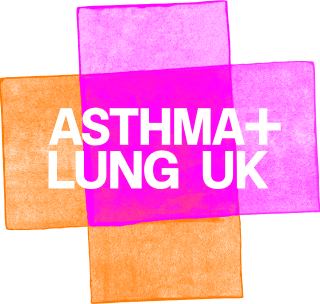This page has information for parents and carers of children with bronchiolitis obliterans. We explain what bronchiolitis obliterans is, how it’s treated and diagnosed, and where to find more support.
On this page:
- What is bronchiolitis obliterans?
- What causes bronchiolitis obliterans?
- How common is bronchiolitis obliterans?
- What are the symptoms of bronchiolitis obliterans?
- How is bronchiolitis obliterans diagnosed?
- How is bronchiolitis obliterans treated?
- What is the outlook for children with bronchiolitis obliterans?
- How can I help my child?
- More help and support
What is bronchiolitis obliterans?
Bronchiolitis = inflammation in the small airways (bronchioles)
Obliterans = permanent narrowing
Bronchiolitis obliterans (BO) is a rare condition that causes inflammation in the airways. It’s sometimes known as obliterative bronchiolitis (OB).
The inflammation in the small airways causes them to become scarred, resulting in permanent narrowing.
Bronchiolitis obliterans is not the same as bronchiolitis, which is an infection in the airways that can affect children under two. Unlike bronchiolitis obliterans, bronchiolitis usually gets better by itself.
What causes bronchiolitis obliterans?
Bronchiolitis obliterans is caused by injury to the lungs. There is no way of knowing or predicting which child will get this type of lung injury. The injury can be caused by:
- an infection such as respiratory syncytial virus (RSV). This is known as post infectious bronchiolitis obliterans and is the most likely type of bronchiolitis obliterans to occur in children.
- breathing in toxic chemicals such as diacetyl, acetaldehyde, formaldehyde, metal oxide, sulphur dioxide, ammonia, chlorine, nitrogen oxides, hydrochloric acid, and sulphur mustard
- autoimmune diseases like arthritis, lupus, or inflammatory bowel disease
- a lung transplant, sometimes called post-transplant bronchiolitis obliterans
- a bone marrow transplant
- a side effect of some medications.
How common is bronchiolitis obliterans?
Bronchiolitis obliterans is a rare condition in children. We don’t know exactly how many children get it.
We do know that it is more likely to happen after a severe chest infection.
What are the symptoms of bronchiolitis obliterans?
Symptoms of bronchiolitis obliterans in children may include any of the following:
- a dry cough
- breathlessness
- difficulty in breathing
- wheezing (a whistling sound when your child breathes).
How is bronchiolitis obliterans diagnosed?
Your child’s doctor may start by asking about your child’s symptoms and medical history.
There are also a number of tests to diagnose bronchiolitis obliterans:
- A CT scan will take detailed pictures of your child’s lungs when they breathe in and out.
- A lung biopsy might be needed if CT scan pictures aren’t clear. A surgeon makes a small cut in your child’s chest and removes some tissue from the lung under general anaesthetic (your child won’t be aware of this happening). This can sometimes be done using keyhole surgery.
- A breathing test (infant pulmonary function test or infant PFT) may be used to see how well your child’s lungs work.
- Lung function tests (a type of breathing test) are blowing tests which are usually done in children aged five and older. This will tell doctors if there is any blockage in the small airways (bronchioles), or if they are very narrowed. In children with bronchiolitis obliterans, the tests will show significant blockage (or fixed narrowing) which does not improve with a reliever inhaler.
- A lung volume test involves sitting in a cubicle about the size of a phone box. Your child will be asked to breathe out into a mouthpiece and then breathe in. The machine measures the amount of air your child’s lungs can hold.
- Measuring oxygen levels. This is called pulse oximetry and involves having a small light sensor taped to a fingertip or toe. It isn’t painful for your child.
- Blood tests to find out if their bronchiolitis obliterans is caused by an underlying disease affecting the connective tissue (the tissue underneath the airways in the lungs).
How is bronchiolitis obliterans treated?
Your child will normally be treated by a team of different specialists. Treatments aim to slow the progression of the condition and ease the symptoms.
Treatments may include:
- Medication to help reduce inflammation. This is usually a steroid like prednisolone or an antibiotic such as azithromycin. A steroid inhaler that needs to be taken regularly may also be prescribed.
- Oxygen therapy. Depending on your child’s age and size, oxygen is delivered in different ways - through an incubator, a face mask, or a tube up your child’s nose (called a nasal cannula). If your child needs oxygen regularly, you may be offered oxygen at home. You can read more about oxygen therapy.
Very rarely, a lung transplant may be considered in severe cases of bronchiolitis obliterans.
What is the outlook for children with bronchiolitis obliterans?
Bronchiolitis obliterans is a serious condition that affects every child differently. The outlook for your child may be different depending on what caused the condition. For example, there is a better outlook for post-infectious bronchiolitis obliterans than post-transplant bronchiolitis obliterans.
Your child may have several lung function (breathing) tests to monitor the condition throughout their life. Some children find their condition improves over time with treatment, while others may not change, or they may get worse. Some children may not survive, especially if they are unsuitable for a lung transplant and they have very severe disease.
How can I help my child?
There are lots of things that you can do to help a child with bronchiolitis obliterans:
- Do not smoke, or let others smoke, around your child and try to avoid exposing your child to a lot of air pollution if you can. We have more information on risks to children’s lungs.
- Make sure your child’s vaccinations are up to date and ask your doctor about the flu, pneumonia, and coronavirus vaccines.
- Make sure your child stays as active as they can. Regular exercise can help keep their lungs working well.
- Make sure they have a healthy diet and drink enough water. The NHS website has useful information about feeding your child a healthy diet.
- Avoid infection where possible. Teach your children to use a tissue and wash their hands after coughing and sneezing and make sure that people around them do too.
Ask your child’s doctors who to contact if you have any questions, or if you’re unsure about something. It’s important to be able to recognise if your child’s condition is getting worse, or if they’re becoming ill, and when you should seek emergency care. Agree a plan with your child’s specialist about what you should do.
More help and support
Looking after a child with a long-term condition, like bronchiolitis obliterans, can be difficult. It’s important you take time to take care of yourself, as well as your child. Talk to your doctor or nurse if you feel like you’re struggling to cope.
You can always call our helpline – our friendly team can help answer your questions or worries. Call 0300 222 5800, Monday to Friday between 9am – 5pm (excluding Bank Holidays).
You may also want to join our Parent and Carer Support Network which provides support and a space for parents and carers of children with lung conditions to come together.
We also have more support and information for parents of children who have been diagnosed with a lung condition.
This content is currently under review. New information will be available soon.








